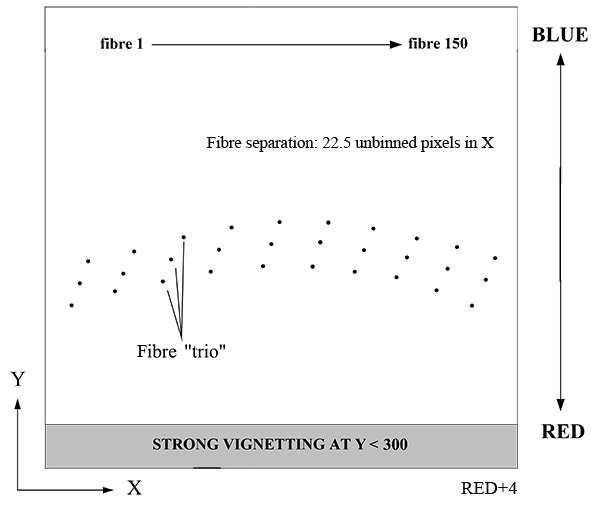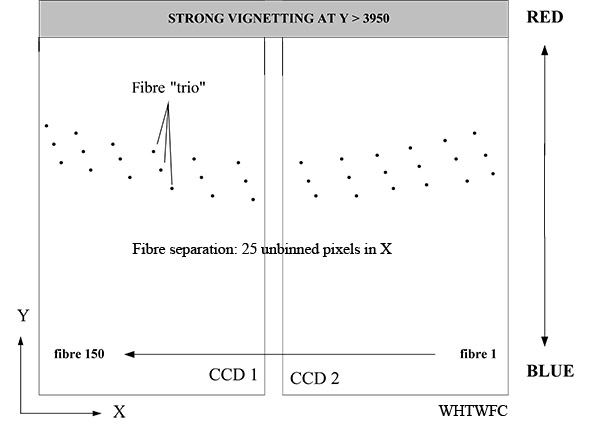Detector
The default detector used by AF2 with the WYFFOS Long Camera is Red+4. However, it is also possible to mount its predecesor WHTWFC
, if there is a strong scientific case that justifies its use.
Red+4 suppresses the fringing at the red end, being <1% at 850 nm, versus the ~30% that WHTWFC shows at the same wavelenght. As well, Red+4 is cosmetically superior to its predecesor, as this one has been degraded for many years of use. Also being a 4k x 4k
chip is also a plus, as none fibre is lost in the gap as it happens with WHTWFC.
Red+4
Red+4 is an e2v 231-84 4k x 4k, red-sensitive, fringe-suppression CCD, which has been successfully commissioned in semester 2013A.See commissioning report
here.
The mosaic has a useful area of 4096 x 4112 pixels of 15 micron each.
Binning is allowed, and two readout speeds
are offered:
- slow (readout-noise = 4.2 e-)
- fast (readout-noise = 5.6 e-)
Read-out plus disc-writing times (sec) for different binning setups:
| binning | 1x1 | 2x2 |
| SLOW | 50 | 39 |
| FAST | 18 | 15 |

|
| Figure 1. Sketch of the Red+4 layout, together with information
on the orientation of spectra and fibres. |
WHTWFC
WHTWFC is a blue-sensitive 2-chip EEV mosaic, which has been in use since 1999.
The mosaic is usually windowed and
mosaiced so as to have 4300 x 4200 pixels, 13.5 microns each.
Binning is allowed, and two readout speeds
are offered:
- slow (readout-noise = 4 e-)
- fast (readout-noise = 6 e-)
Read-out plus disc-writing times (sec) for different binning setups:
| binning | 1x1 | 2x2 |
| SLOW | 40 | 15 |
| FAST | 30 | 10 |

|
| Figure 2. Sketch of the WHTWFC layout after windowing, together with information
on the orientation of spectra and fibres. |
Note that 2 fibres (usually #82 and #83 or #83 and #84) are lost in the gap between
the two chips.

